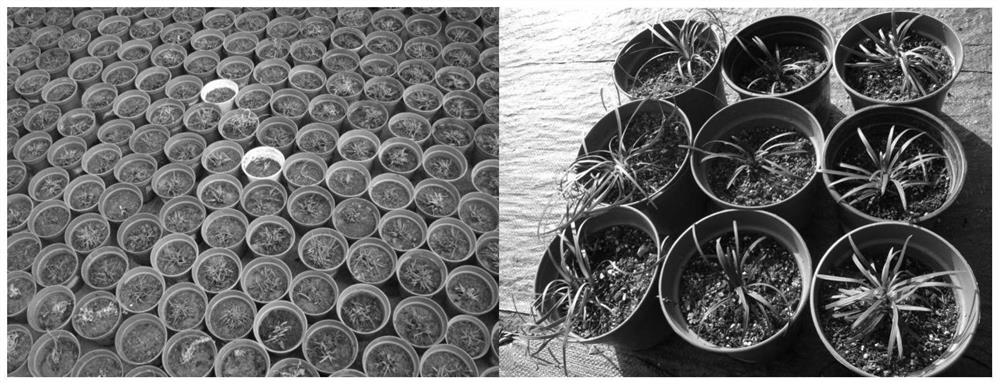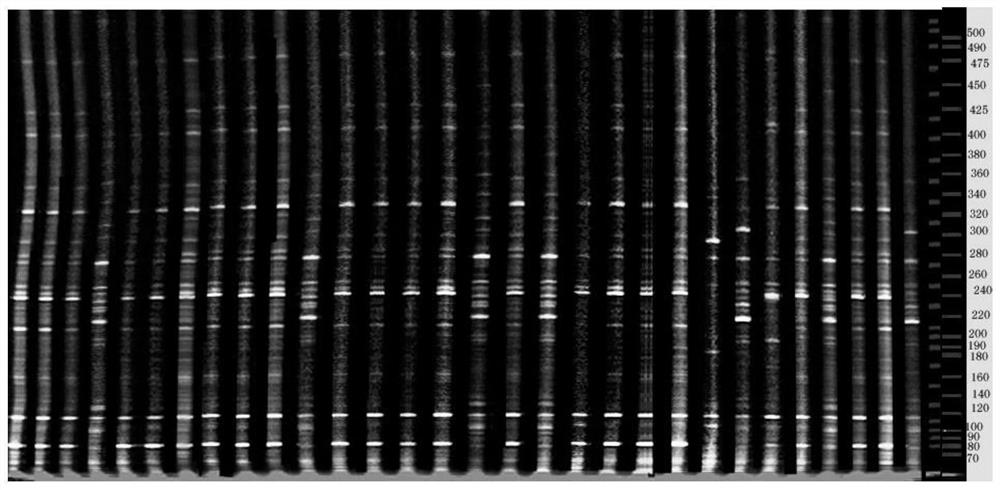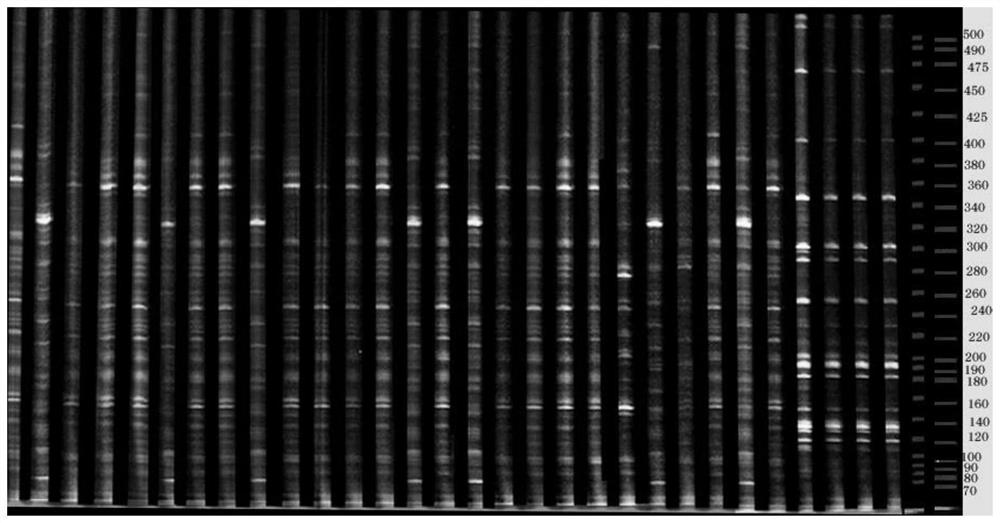Construction method of ophiopogon japonicus AFLP molecular fingerprint spectrum library and application of construction method
A technology of molecular fingerprints and construction methods, which is applied in the field of construction of AFLP molecular fingerprint databases, can solve the problems of undiscovered and undiscovered AFLP molecular fingerprint database methods and applications, and improve reliability , shorten the detection cycle, the effect of high resolution
- Summary
- Abstract
- Description
- Claims
- Application Information
AI Technical Summary
Problems solved by technology
Method used
Image
Examples
Embodiment 1
[0036] Screening of test germplasm and extraction of genomic DNA: The present invention screened 30 germplasms from the planted potted grass germplasm resource garden, of which 19 were collected from different habitats in China, and 11 were cell-induced mutants. The selection principle is that the appearance of the germplasm varies from large to small and difficult to distinguish with naked eyes. During the growing season, fresh young leaves were cut and bagged and brought back to the laboratory for genomic DNA extraction.
[0037] 1. See Table 1 for the number and name of the tested germplasm:
[0038] Table 1: No. and name of germplasm samples of C.
[0039]
[0040]
[0041] 2. Extraction of Genomic DNA of different germplasms:
[0042] The modified CTAB method is preferably used:
[0043] (1) Weigh 50 mg of fresh young and tender Herba pratense leaves and grind them in liquid nitrogen (with 4% PVP) for 3-4 times until powdered;
[0044] (2) Put the powder into a ...
Embodiment 2
[0058] Establishment and optimization of the AFLP reaction system of Cinnamon grass: the corresponding bands or fingerprints of different germplasms were obtained through enzyme digestion, ligation, pre-amplification, selective amplification, electrophoresis, etc., among which the same bands were considered to have the same For the genetic loci, bands with different sizes are considered to have different genetic loci.
[0059] 1. Restriction enzyme digestion and ligation of genomic DNA
[0060] It is preferably carried out by one-step enzyme cleavage and ligation, and the steps of the one-step enzyme cleavage and ligation are as follows:
[0061] (1) First determine the base sequence of the linker used for AFLP analysis, preferably the base sequence of the linker is shown in Table 1.
[0062] Table 1: Base sequence of linker
[0063] EcoR I Adapter 1 5'-CTC GTA GAC TGC GTA CC-3' EcoR I Adapter2 5'-AAT TGG TAC GCA GTC TAC-3' Mse I Adapter 1 5'-GAC GA...
Embodiment 3
[0103] Spectrum analysis of amplification products: After the 30 germplasm selective amplification products obtained in the above steps were subjected to denaturing polyacrylamide gel electrophoresis and silver staining, they were scanned on an ABI 377 sequencer to obtain an AFLP gel electrophoresis separation spectrum library, which was separated by GENESCAN3 .1 Software analysis results, and the size of each fragment of the sample is extracted by Binthere software. After automatic statistical analysis by the software, the electrophoretic bands were recorded according to the method of recording the amplified band at the same migration site as 1, and the absence of the band as 0, and converted it into a "0, 1" original data matrix for statistical analysis of genetic variation information and relatives. Relational polymorphism map analysis. Specific steps are as follows:
[0104] (1) Denaturing polyacrylamide gel electrophoresis steps:
[0105] ①Preferred denaturing solution ...
PUM
 Login to View More
Login to View More Abstract
Description
Claims
Application Information
 Login to View More
Login to View More - R&D
- Intellectual Property
- Life Sciences
- Materials
- Tech Scout
- Unparalleled Data Quality
- Higher Quality Content
- 60% Fewer Hallucinations
Browse by: Latest US Patents, China's latest patents, Technical Efficacy Thesaurus, Application Domain, Technology Topic, Popular Technical Reports.
© 2025 PatSnap. All rights reserved.Legal|Privacy policy|Modern Slavery Act Transparency Statement|Sitemap|About US| Contact US: help@patsnap.com



